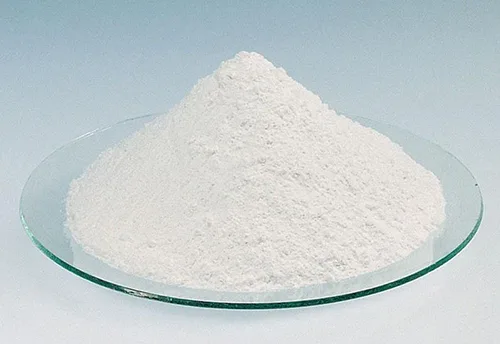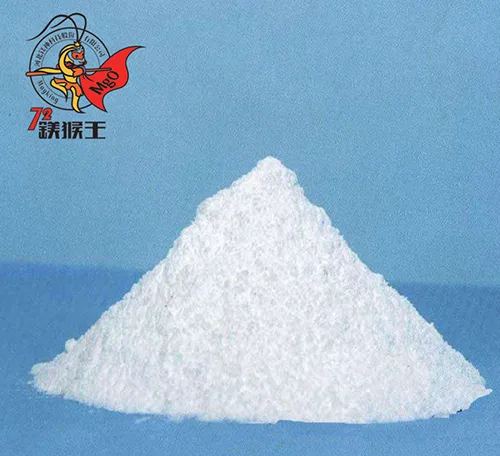Magnesium oxide (MgO) is a white, alkaline oxide widely used in rubber manufacturing. Its unique physical and chemical properties contribute to various aspects of rubber processing, enhancing product performance and longevity. This article explores the multiple roles of magnesium oxide in rubber compounding, from vulcanization acceleration to reinforcement and flame retardancy.
Vulcanization Accelerator
Vulcanization is a crucial step in rubber processing, where rubber molecules cross-link through vulcanizing agents, improving elasticity, strength, and durability. Magnesium oxide plays an essential auxiliary role in this process, particularly in chloroprene rubber. By neutralizing acidic by-products and regulating pH levels, MgO enhances the efficiency of vulcanization. In combination with zinc oxide, it further improves reaction speed and cross-linking density, ensuring superior rubber performance.
Acid Acceptor
During rubber processing, especially in halogen-containing rubbers like chloroprene, acidic by-products such as hydrogen chloride (HCl) can form. These acidic substances can degrade the rubber matrix, reduce durability, and even corrode processing equipment. Magnesium oxide, being alkaline, effectively neutralizes these acids, thereby preventing structural damage, extending the service life of rubber products, and safeguarding machinery.
Heat Stabilizer
Rubber products often undergo high-temperature processing, which can lead to thermal degradation. Magnesium oxide, with its high melting point and thermal stability, helps maintain rubber integrity under extreme temperatures. This property is particularly beneficial in tire manufacturing and other high-heat applications, where it prevents premature decomposition and ensures the retention of rubber’s mechanical properties during vulcanization.
Reinforcement Filler
Although magnesium oxide does not provide the same level of reinforcement as traditional fillers like carbon black or silica, it still contributes to improving rubber hardness, rigidity, and wear resistance. This makes it particularly useful for applications that demand high mechanical strength, such as industrial gaskets, seals, and rigid rubber components. By incorporating MgO into rubber formulations, manufacturers can enhance durability and resistance to mechanical stress.
Flame Retardant
Flame retardancy is a critical requirement for rubber materials used in electrical insulation, automotive components, and fire-resistant applications. Magnesium oxide, being inherently non-flammable, enhances the flame resistance of rubber by absorbing heat and forming a protective barrier. Under high temperatures, MgO undergoes decomposition, potentially releasing carbon dioxide to displace oxygen, thereby slowing combustion. This property makes it valuable in fireproof materials, wires, and cables.
Processing Aid
Magnesium oxide also acts as a processing aid in rubber manufacturing. It improves the fluidity of rubber mixtures, reducing adhesion to rollers and other processing equipment. This results in better extrusion and calendering efficiency, reducing production downtime and enhancing overall manufacturing consistency. In mixing operations, MgO prevents rubber compounds from sticking, thereby simplifying handling and improving workability.
Special Application Scenarios
Beyond its general roles in rubber compounding, magnesium oxide serves specialized functions in specific applications, further showcasing its versatility.
Fluororubber Vulcanization
In fluororubber (FKM) formulations, magnesium oxide acts as a vulcanizing agent, helping regulate cross-linking reactions. Its ability to control the vulcanization rate ensures that fluororubber achieves the desired mechanical properties while maintaining chemical resistance. This is particularly important in applications such as aerospace seals and automotive gaskets, where performance under extreme conditions is critical.
Medical Rubber
For medical-grade rubber applications, high-purity magnesium oxide is essential. It ensures biocompatibility and prevents contamination, making it suitable for products like surgical gloves, medical tubing, and pharmaceutical closures. The non-toxic nature of MgO aligns with stringent healthcare regulations, ensuring safety and reliability.
Corrosion-Resistant Rubber
Rubber components exposed to harsh chemical environments, such as industrial seals and protective linings, benefit from magnesium oxide’s ability to neutralize acids and improve chemical resistance. This property enhances the longevity of rubber products used in chemical processing, oil and gas industries, and marine applications.
Conclusion
Magnesium oxide is an indispensable component in rubber manufacturing, offering multifaceted benefits such as vulcanization acceleration, acid neutralization, heat stabilization, reinforcement, flame retardancy, and improved processability. Its specialized applications in fluororubber, medical rubber, and corrosion-resistant rubber further demonstrate its versatility. As the demand for high-performance rubber materials grows, magnesium oxide continues to be a valuable additive, enhancing the durability and functionality of rubber products across various industries.
FAQs
Why is magnesium oxide used in chloroprene rubber?
Magnesium oxide is used in chloroprene rubber to neutralize hydrogen chloride by-products, preventing degradation and extending the material’s service life. It also enhances vulcanization efficiency when combined with zinc oxide.
Can magnesium oxide replace carbon black in rubber compounding?
While magnesium oxide does offer reinforcement properties, it is not a direct replacement for carbon black. Instead, it is used in applications where maintaining light color or chemical resistance is a priority, such as transparent or white rubber products.
How does magnesium oxide improve the fire resistance of rubber?
Magnesium oxide enhances fire resistance by absorbing heat and forming a protective layer that slows combustion. It may also contribute to the release of gases that displace oxygen, reducing flammability in rubber materials used for wires, cables, and fireproof applications.



